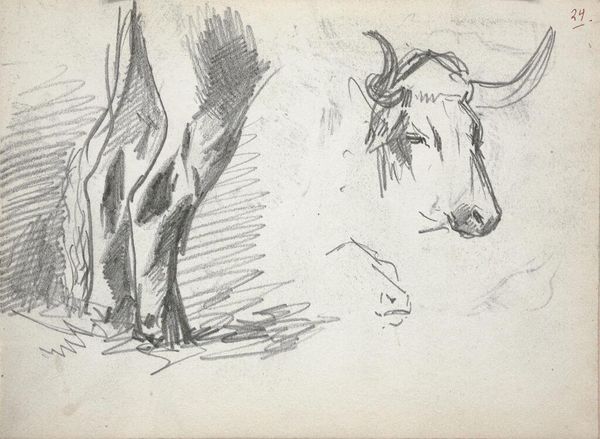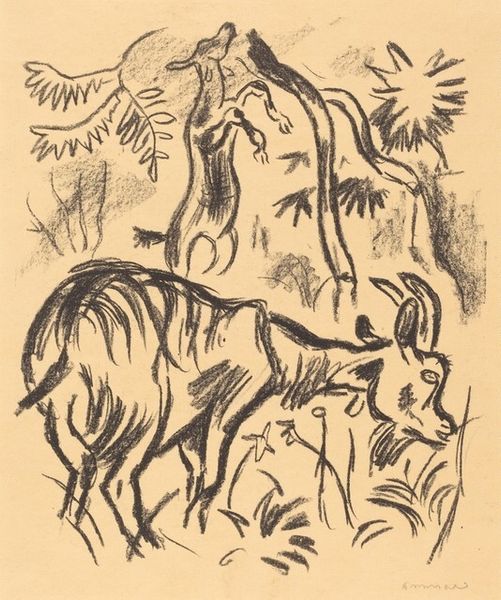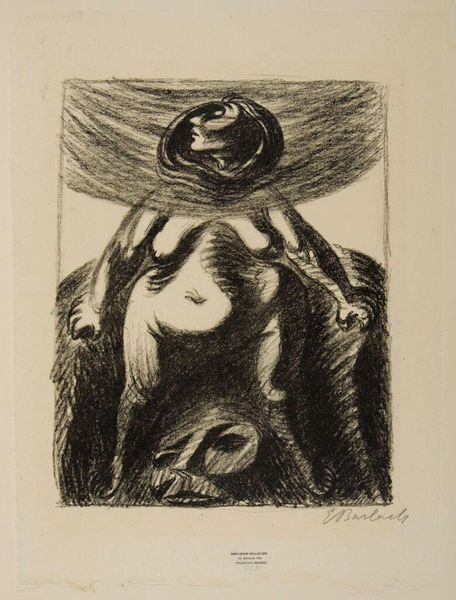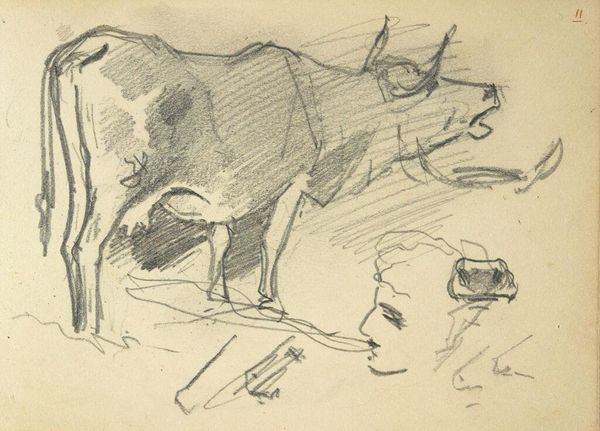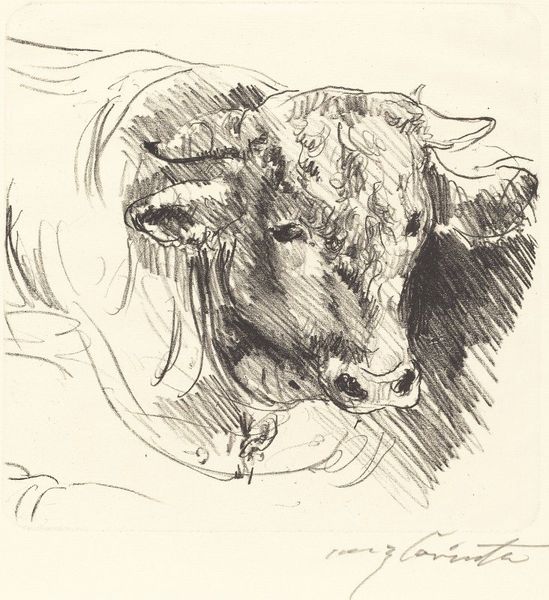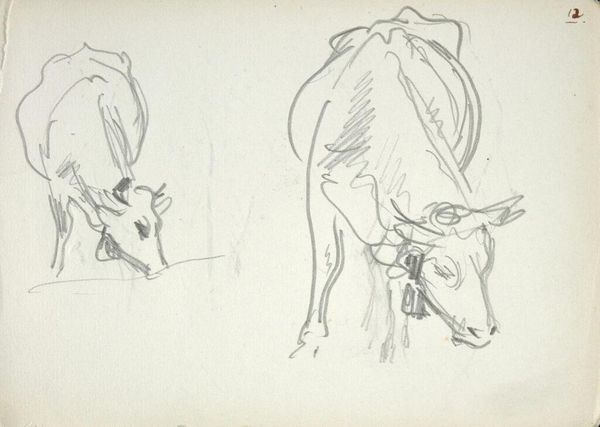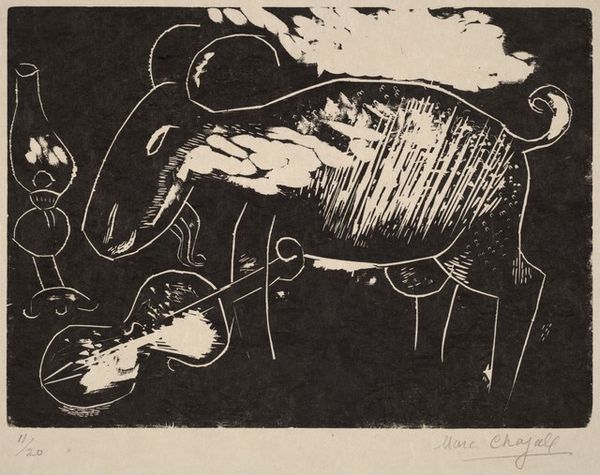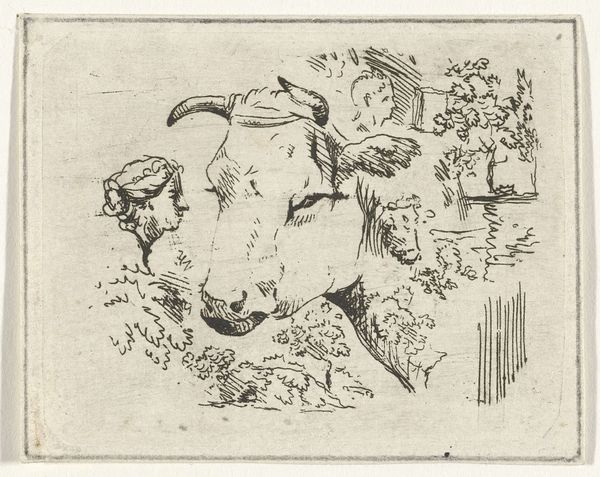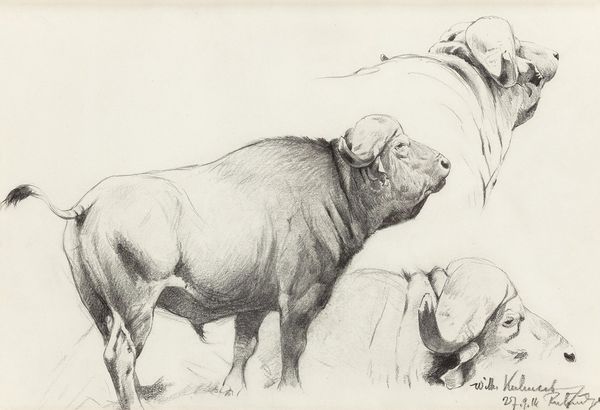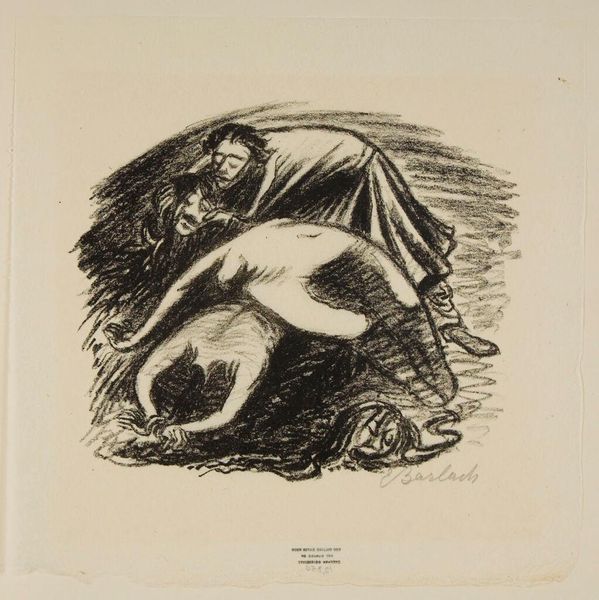
drawing, ink
#
drawing
#
ink drawing
#
pen illustration
#
pen sketch
#
landscape
#
figuration
#
ink
#
geometric
#
sketch
#
modernism
Copyright: Public domain Japan
Editor: Yasuo Kuniyoshi's "Milking the Cow," created in 1927 with ink, has a surprisingly unsettling feel to me. It's labeled as a landscape but that bovine’s disproportionate size and strange, geometric qualities seem to dominate everything. What do you make of it? Curator: The image does feel uncanny. Note how Kuniyoshi blends traditional pastoral scenes with modernist abstraction, setting up a tension that vibrates with psychological implications. Consider the prominent eyes of the cow: they seem to gaze out knowingly. The animal-human connection represented here transcends mere agricultural activity. Don't you think? Editor: Absolutely, the cow's eyes are piercing! So you're saying that it’s about a deeper connection rather than just a snapshot of farm life? Curator: Precisely. Observe also the symbolic placement of the woman, almost *emerging* from the cow's back. Perhaps it represents nourishment, motherhood, or even a mythical origin story, subtly playing into societal views about womanhood as associated to nature. Does that resonate with you? Editor: It does. I hadn’t considered the sort of mythical weight that such ordinary scenery may have. So the symbols reflect larger societal roles and maybe a reverence for nature? Curator: Yes, exactly. These recurring motifs around nourishment and womanhood tap into very old and powerful symbolic traditions in many cultures. Recognizing them is central to the image's strength. What do you take away from our chat? Editor: That even simple pastoral scenes, depicted in monochrome with a somewhat unnerving touch, are teeming with layers of history, societal expectations, and artistic experimentation that are definitely thought provoking. Thank you!
Comments
No comments
Be the first to comment and join the conversation on the ultimate creative platform.
